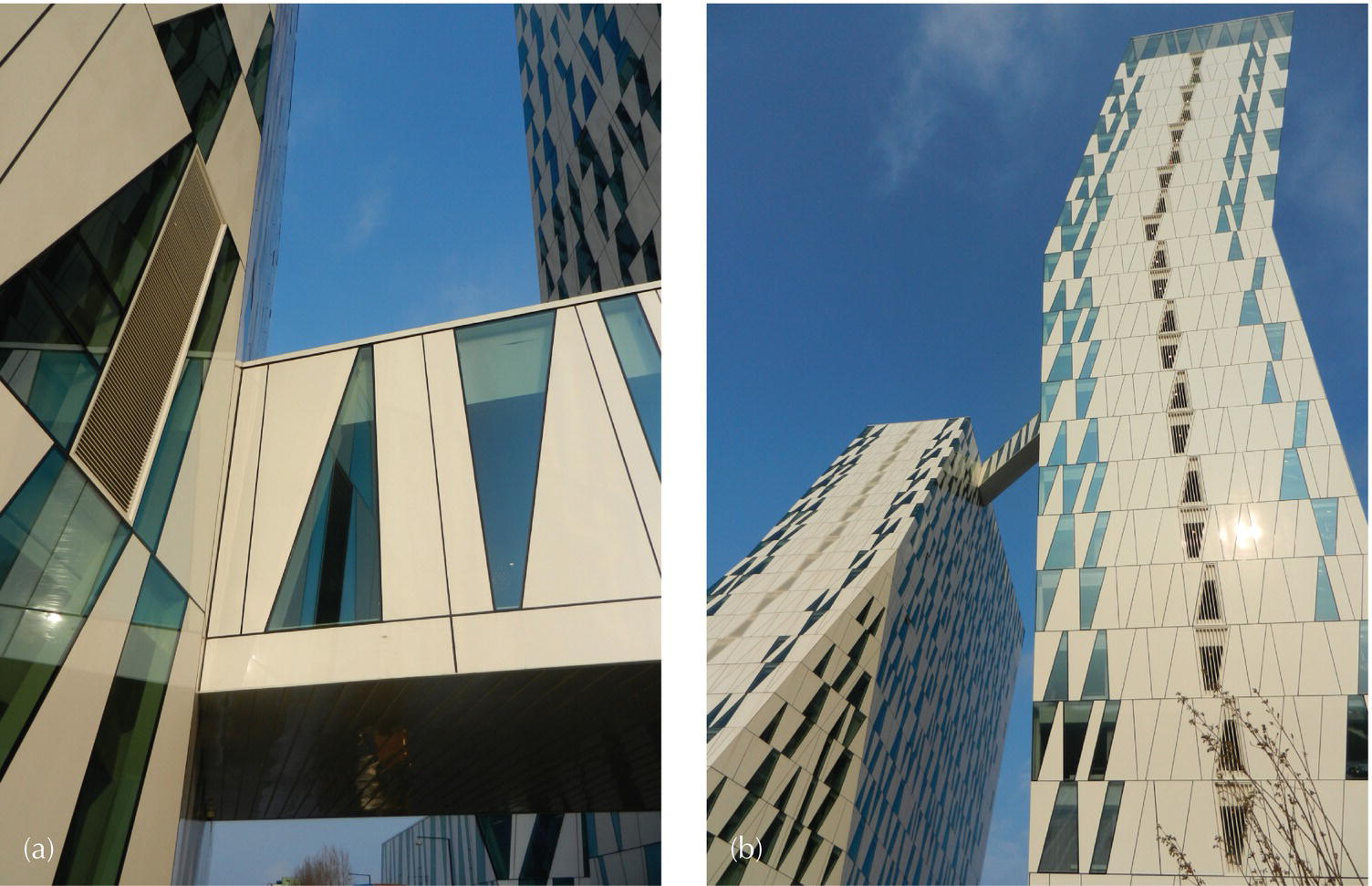8Envelopes to Framed Buildings
The structural frame provides the possibility of endless variation in the form and appearance of buildings that no longer need to be constrained by the limitations of loadbearing construction. Building designers may choose to express the structural frame or conceal it behind the building envelope. Concrete and steel are the most common framing materials for high‐rise buildings, although timber is an alternative choice for up to around ten storeys. Whatever the choice of frame, it is important to remember that it will form part of the building envelope and may affect the envelope’s functional requirements. The use of the various materials for the external wall is, to some extent, influenced by the relative behaviour of the structural frame and the wall to accommodate differential structural, thermal and moisture movements, which affect the functional requirements of a wall. The finished appearance of the external wall is another significant consideration, and it is possible to create some highly creative buildings with the use of cladding, as illustrated in Photograph 8.1.

Photograph 8.1 Creative use of cladding.
8.1 Terms and definitions
A variety of terms and definitions exist in relation to the external skin of framed buildings. The term used in this chapter is ‘envelope’, which covers a variety of construction methods ranging from cladding ...
Get Barry's Advanced Construction of Buildings, 4th Edition now with the O’Reilly learning platform.
O’Reilly members experience books, live events, courses curated by job role, and more from O’Reilly and nearly 200 top publishers.

